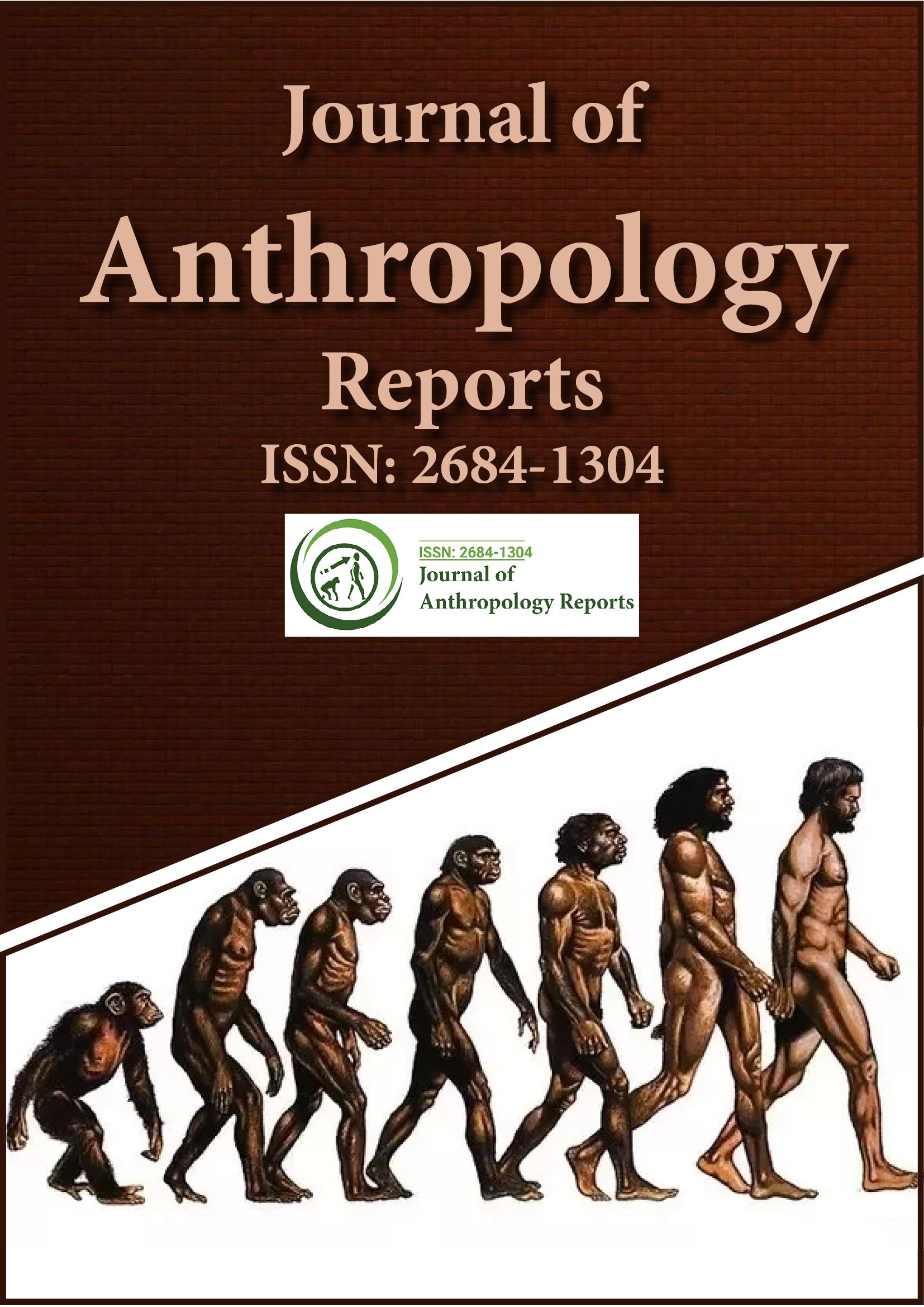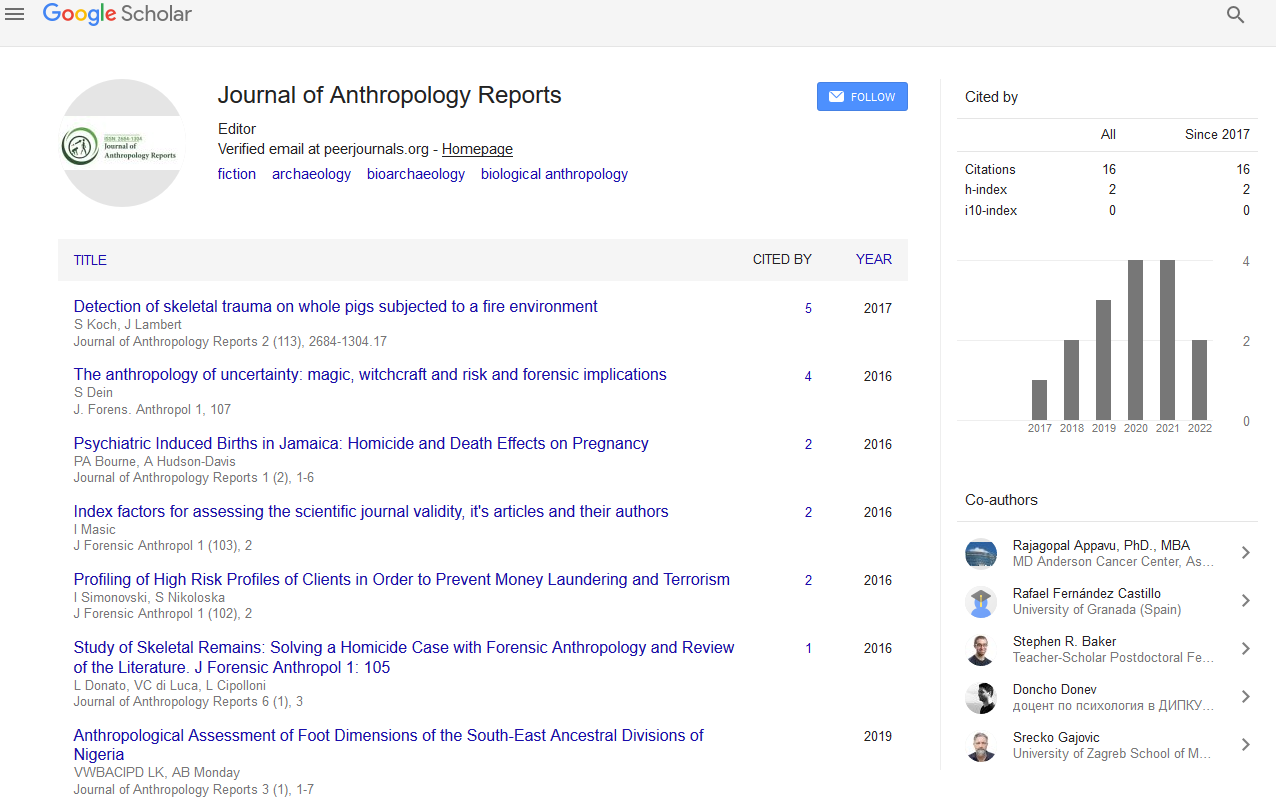Indexed In
- RefSeek
- Hamdard University
- EBSCO A-Z
Useful Links
Share This Page
Journal Flyer

Open Access Journals
- Agri and Aquaculture
- Biochemistry
- Bioinformatics & Systems Biology
- Business & Management
- Chemistry
- Clinical Sciences
- Engineering
- Food & Nutrition
- General Science
- Genetics & Molecular Biology
- Immunology & Microbiology
- Medical Sciences
- Neuroscience & Psychology
- Nursing & Health Care
- Pharmaceutical Sciences
Abstract
Forensic 2020: Comparative study of the mental health of hate crime and crime victims-Ishangi Mishra- Jain (Deemed-to-be-university)
Ishangi Mishra
Abstract
Hate crime is an extreme form of prejudice against race, religion, caste, disability, sexual orientation, ethnicity, gender, or gender identity. No mental health professionals are specially assigned for hate crime victims neither is any law standing and speaking for the victims of hate crime in India. This framework is essential to understand the nature of the contemporary crisis of mob violence, lynching and vigilantism in India. The aim of the study is to spread awareness about hate crime and highlight outcomes through a quantitative study of the psychological effects using Mental Health Inventory -38 for evaluating overall emotional functioning through a comparative study on victims of hate crime and crime in India. N= 60 participants, 20 to 30 years drawn from data of mental hospitals , police records and general public. There would be no significant difference between hate crime victims and crime victims for psychological distress and wellbeing. Analysis of data will increase awareness of the impact of hate crime and the information can be used for further studies for law enforcement in India in order to address hate crime. This study does not attempt to explain fully the nature of hate crime in India . Its aim to provide to reflection on the need for mental health professional needed for hate crime victims and crime victims.
Introduction:
In spite of the fact that definitions differ from state to state, "despise wrongdoing" for the most part implies a wrongdoing against people or property persuaded in entire or to some extent by racial, ethnic, strict, sex, sexual direction and different preferences.' Politicians, writers, intrigue gatherings, and a few criminologists demand that the United States is encountering an acrossthe-board detest wrongdoing "scourge." The utilization of the plague analogy is intended to sensationalize a forcefully quickening abhor crime percentage. Affirmations that an abhor wrongdoing scourge exists are quite often went with by suggestions for new "abhor wrongdoing laws" that expansion least or potentially most extreme discipline for guilty parties
In Hate Crimes: Confronting Violence Against Lesbians and Gay Men,42 different creators center around brutality against gay people, starting with the reason that such assaults, while not another |Issue, have expanded drastically. A huge part of the book presents narrative proof of an expansion in against gay detest violations, featuring individual severe episodes. The creators express that overviews of exploitation among gays and lesbians may not present an exact picture of the greatness of the counter gay loathe wrongdoings because of both a reluctance by a few people to "come out" and conceivable under-announcing of episodes.
METHODS:The most provocative of the ongoing books on despise wrongdoings is Alphonso Pinkney's Lest We Forget: White Hate Crimes.43 Pinkney contends that the traditionalist political atmosphere during the 1980s allowed an climate of threatening vibe against minorities to flourish. Pinkney states,
"It the most disturbing pattern was the resurgence of unmistakable supremacist behavior.... [R] acial conduct was rampant."44 In one section, titled "Late Surge of Racial Violence," Pinkney focuses the finger of fault at that point President Ronald Reagan: "the fact of the matter is that Ronald Reagan set the tone and made the earth where demonstrations of racial brutality thrived.... Therefore, the broad physical assaults on blacks and other minorities went unchecked."45 The heft of the book is committed to depicting profoundly announced occurrences of brutality, some of which were not unmistakably inferable from bigotry. For instance, Pinkney portrayed the Bernhard Goetz case, in which Goetz, a white man, shot four dark young people who were tyring to loot him, for instance of racial brutality. Goetz was vindicated. Essentially, when New York City police shot an intellectually precarious dark lady as she rushed at another police official with a blade, Pinkney marked the occurrence race-based viciousness
Discussion:
One must analyze the wellsprings of abhor wrongdoing information so as to see how the detest wrongdoing plague speculation has been developed. Some support gatherings, for example, the ADL, gather information and create measurements to help their cases that those whom they speak to are encountering a pestilence of inclination inspired exploitation.
These measurements are utilized to affirm the "truth" of detest wrongdoing. While it is past the extent of this Article to scrutinize each support gathering's abhor wrongdoing information assortment and detailing systems There are not kidding issues in deciding when a wrongdoing is inspired in entire, or to a limited extent, by predisposition. Notwithstanding grave First Amendment issues which are past the extent of this paper,1 08 deciding inspiration is a complex, every now and again outlandish, try. A few, most likely the larger part, of loathe wrongdoing guilty parties are not secured; their inspiration must be inferred.10 9 Even whenever caught, guilty parties won't give knowledge into their inspirations. In this circumstance, and in the circumstance where wrongdoers are not gotten, the coding of detest violations relies on data gave by the person in question or gathered from the wrongdoing scene. However, the casualty might be mixed up, hold individual predispositions that influence their judgment, be excessively touchy, have misperceived the episode, or essentially be questionable. While there will without a doubt be some reasonable cases, numerous cases will be logical in wording of various inspirations. Consider a battle that happens over a parking spot, during the course of which a racial sobriquet is utilized. While getting a stopping spot "propels" the battle, under some legal developments the battle could be delegated a predisposition episode, exposing the designation utterer to a harsher criminal sanction.1 0 A significantly more unpredictable issue would be introduced by endeavoring to tally the quantity of inclination
wrongdoings that happened, for instance, during the L.A. revolts in the repercussions of the Rodney King preliminary. Does all the property harm submitted by African-Americans against Korean-possessed stores consider predisposition wrongdoing?
The psychological well-being needs of wrongdoing casualties are regularly bothered by the encounters encouraged by the lawful framework. While wrongdoing casualties need social affirmation and backing, the ill-disposed court framework in the United States expects them to persevere through an open test to their believability. Casualties need to set up a feeling of intensity and power over their lives, however the court expects them to be accommodating to a mind boggling set of decides and systems that might be befuddling and over which they have no control. Casualties need a chance to recount to their accounts in their own specific manner in a gathering based on their very own preference; notwithstanding, the court expects them to react to an unbending organization of lawyer conceived questions that set the parameters for what the casualty can state about his/her exploitation. Casualties regularly need to control or breaking point their introduction to explicit tokens of the injury, however the court expects them to remember the experience by straightforwardly going up against the culprit. Emotional well-being laborers who serve casualties usually report their conviction that their patients' horrendous side effects are declined by negative contacts with the equity framework. Numerous wrongdoing casualties additionally face phonetic, social, and social deterrents to support in the equity framework. In spite of imposing hindrances to positive cooperation in the equity framework, there are likewise significant potential psychological wellness benefits for wrongdoing casualties. Inclusion in the lawful framework may eventually give casualties more prominent security and insurance for themselves and may upgrade casualties' feeling of commitment to the assurance of others by being instrumental in the conviction and debilitation of the wrongdoer. Lawful intercessions can likewise give wrongdoing casualties open affirmation of their torment, compensation for the damage done to them, and maybe a statement of regret from the wrongdoer. The development for casualties' privileges has initiated a few significant changes planned for enabling wrongdoing casualties who look for equity. These incorporate the chance of acquiring pay for the cost of clinical or emotional well-being treatment based on an authoritative objection, the privilege of casualties to talk about their cases with the examiner, and the alternative of giving a casualty sway proclamation to the court at condemning. The development for therapeutic equity additionally offers a few options in contrast to conventional types of lawful procedures in criminal cases. Helpful equity centers around the mischief brought about by the wrongdoing, along these lines making the casualty's experience a highlighted part of case aura
Keywords: hate crime,mental health.
Note: This work will be partly presented shortly at 5th International Conference on Forensic Psychology & Criminology, September 07-8, 2020 at a webinar
Published Date: 2020-06-01;

